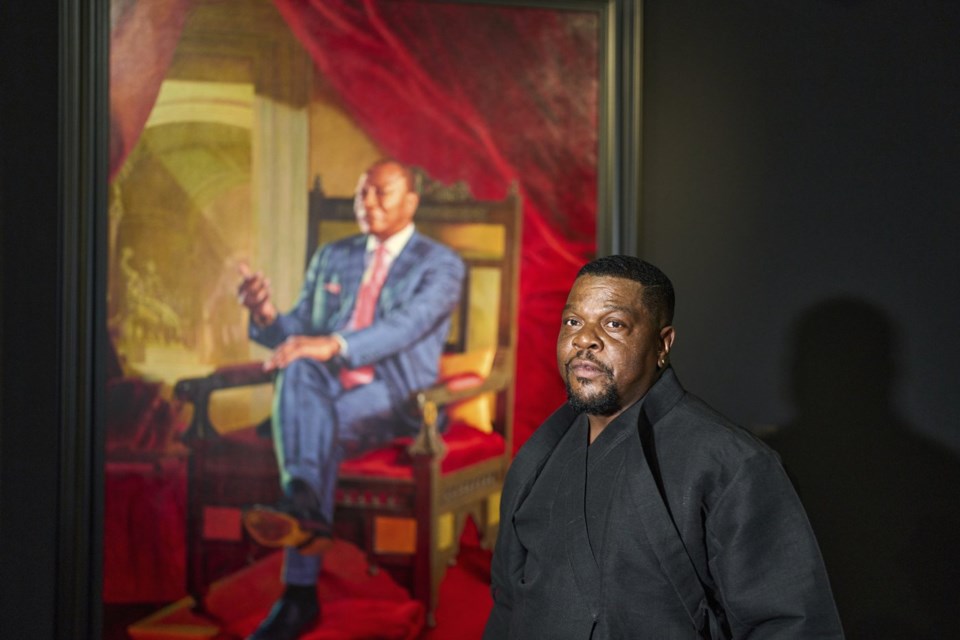RABAT, Morocco (AP) — American unveiled a series of large-format portraits of African leaders in on Tuesday, building on his now famous 2018 portrait of former U.S. President Barack Obama sitting casually amid a wild cascade of leaves and flowers.
His exhibition, entitled “A Maze of Power,” opened at the Mohammed VI Museum of Modern and Contemporary Art in Rabat, Morocco’s capital, after previously showing in Paris and Dakar, Senegal.
The artwork borrows from classical easel painting techniques, posing African leaders in a style mainly associated with European royalty and aristocracy.
“What I wanted to do was to draw ideas in, to be able to look at the depiction of power, both beautifully and problematically,” Wiley said.
In one portrait, Ethiopia’s former president, Sahle-Work Zewde, stands before a window, her nation’s bustling capital stretching behind her as her hand clasps a dangling flower.
In another, Hery Rajaonarimampianina, former president of Madagascar, is depicted sitting confidently astride a horse. And Alassane Ouattara, president of Ivory Coast, is seen clenching his brow as he grips a sword in his right hand.
“I was thinking about the presidency at large as a symbol, as a seat of power,” Wiley told The Associated Press at the opening of his exhibition.
“A Maze of Power” arrived in Morocco seven months after first showing at Paris’ Musée du Quai Branly — Jacques Chirac. It's part of the Moroccan museum's efforts to become a hub for African art ahead of the next year's opening of the Museum of the African Continent, across the street in Rabat.
Wiley said that after his Obama portrait, he was able to leverage his connections to gain audiences with leaders from across Africa and persuade them to sit for him.
In addition to Obama’s, the portraits also echo Wiley’s earlier works, in which young Black men appear in poses most associated with paintings of kings and generals.
Showing his would-be subjects a book full of classical paintings to draw inspiration from, Wiley said he prepares for painting by taking hundreds of photographs of each leader and then placing them in settings both real and abstract.
Although he wanted to show political power, the leaders' individual political choices were not relevant to the series, Wiley said.
The leaders depicted include some marred by corruption scandals and others who ignored presidential term limits and repressed protestors. There are also two whose militaries are : Rwanda’s President Paul Kagame and Congo’s President Felix Tshisekedi.
Though Wiley said the role of some art can be to shed light on those affected by political decision-making, his goals were different.
“This project is more about pulling way back and having a sort of bird’s-eye view at the phenomena of the political portrait itself,” he said.
Sam Metz, The Associated Press




